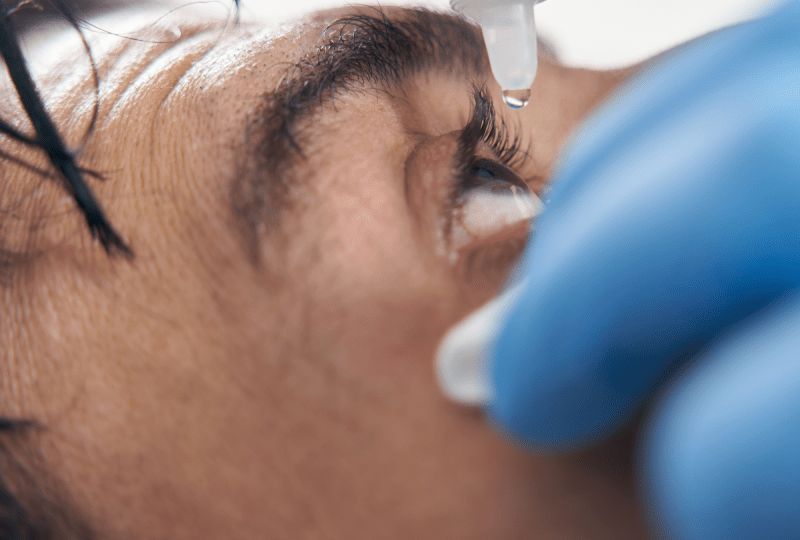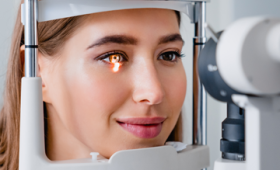Does Cataract Recur After Surgery?
Cataract surgery is a procedure in which the natural opacified lens in the eye is removed and replaced with an artificial intraocular lens (IOL). The success of the surgery is very high, and it is impossible for the removed natural lens to re-form; meaning the cataract itself does not recur. However, over time, in approximately 20% to 50% of patients, renewed clouding may occur due to cell growth on the membrane (posterior capsule) left in place to hold the new lens. This condition is called secondary cataract or Posterior Capsule Opacification (PCO). PCO is a secondary condition permanently resolved with a simple and painless laser treatment. Here are the 35 most frequently asked questions about this topic.
Does Cataract Surgery Really Recur?
No, the cataract itself definitely does not recur in the eye that has undergone cataract surgery because the opacified natural lens has been completely removed. The condition that occurs after surgery and is popularly known as “cataract coming back” is the opacification of the posterior capsule membrane used to place the artificial lens during the surgery. This is a completely different process and can be permanently eliminated with a very short outpatient procedure called YAG laser capsulotomy, which instantly restores clear vision.
What Is Secondary Cataract And How Does It Occur?
Secondary cataract, medically known as Posterior Capsule Opacification (PCO), is the clouding of the capsule membrane behind the artificial lens (IOL) placed in the eye after cataract surgery. Epithelial cell remnants of the natural lens, over time, multiply on this membrane during the surgery, forming a film layer. This opacification prevents light from reaching the retina and causes the patient to experience renewed blurry vision, glare, and loss of contrast. PCO is not a failure of the surgery but a common condition that occurs as a result of the eye’s healing process.
Is The Cause Of Opacification Dependent On The Type Of Intraocular Lens?
It has been observed that the risk of opacification is dependent on the structure and material of the artificial lens (IOL) placed inside the eye. Especially newer generation lenses with square-edged designs are more effective in reducing the risk of PCO by preventing cell migration. Lenses made of acrylic material are known to have a lower rate of opacification compared to Silicone or PMMA lenses. The surgeon’s technique for placing the lens is also important; tight contact between the capsule and the lens reduces the PCO risk. Modern centres in Turkey use the latest technology IOLs that minimize the risk of PCO.
How Often Is Secondary Cataract Seen?
Secondary cataract (PCO) has the potential to be seen in 20% to 50% of patients operated on today, although it varies depending on the surgical technique, the lens used, and the patient’s age. PCO usually occurs months or even years after the surgery. The risk of PCO after cataract surgery in children is much higher than in adults. Thanks to advanced surgical techniques and modern lens designs, these rates are gradually being reduced.
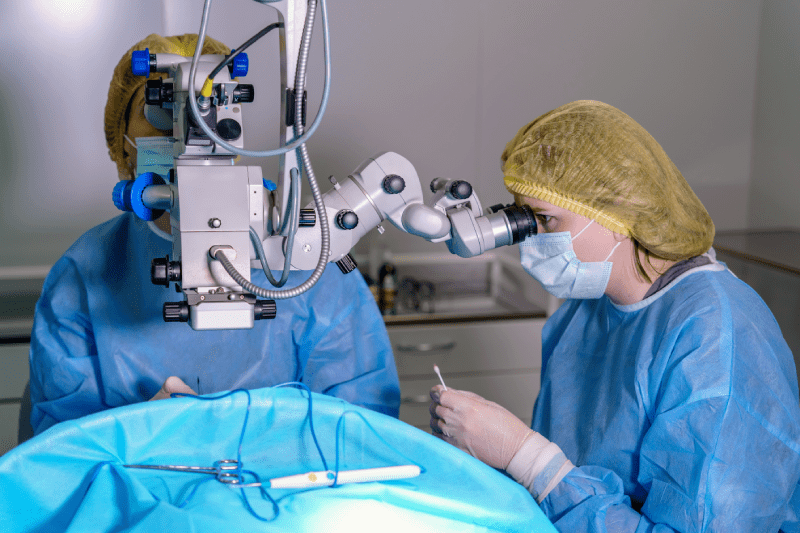
Is YAG Laser Treatment A Permanent Solution For Opacification?
Yes, YAG laser capsulotomy, applied for the treatment of secondary cataract, is an almost 100% definite and permanent solution for eliminating opacification. The laser creates a small, clear opening in the clouded posterior capsule. Light passes through this opening to the retina, and the patient instantly regains clear vision. It is practically impossible for the opacification to recur in the same place after this procedure. This treatment is routinely applied in modern eye clinics in Turkey.
Is YAG Laser Treatment A Painful Procedure?
No, YAG laser capsulotomy is a painless and fast procedure. Anesthetic eye drops are used to numb the eye surface before the procedure. The patient may only hear a slight clicking sound and see a bright light during the laser application. The procedure usually takes only a few minutes for each eye, and the patient can immediately return to their normal daily activities. This comfortable procedure is performed in health centres in Turkey, considering the comfort of the patients.
When Does Vision Improve After Laser Treatment?
Vision clarity after YAG laser treatment usually improves very quickly, often instantly. Since the membrane causing the cloudiness is cleared immediately, light reaches the retina without obstruction. Some patients may experience slight blurriness in the first few hours due to slight swelling caused by the laser, but this condition usually resolves completely within a day. Patients undergoing laser treatment in Turkey feel a great sense of relief afterwards.
What Are The Factors That Increase The Risk Of Secondary Cataract?
There are several factors that increase the risk of secondary cataract. The primary one is the patient’s young age; children and young adults are at higher risk because their cell regeneration rate is higher. In addition, inflammatory eye diseases (uveitis) and the use of certain types of lenses can also increase the risk. The technical precision in cleaning the capsule during surgery is also an important surgical factor affecting the risk.
How Long After Cataract Surgery Does It Recur?
Secondary cataract does not occur immediately after surgery, but usually appears within a period ranging from a few months to a few years. The most common period of occurrence is the first 2-5 years after surgery. Although rare, opacification may develop much faster or much later in some patients. The length of this period depends on the person’s biological healing rate and the type of lens used.
Does The Artificial Lens Need To Be Replaced If PCO Develops?
No, if PCO (secondary cataract) develops, the artificial lens (IOL) placed in the eye does not need to be replaced. The lens itself is clean and functional. The opacified part is the natural capsule membrane remaining behind the lens. The YAG laser solves the problem by cutting this membrane and creating an opening. This procedure does not affect the lens itself or its function.
Does Laser Treatment Cause Side Effects?
Although YAG laser capsulotomy is a safe procedure, it can rarely cause some side effects. The most common ones include temporary increase in intraocular pressure and a very slight increase in the risk of retinal detachment. The pressure increase is usually easily controlled with drops used before or after the procedure. The risk of retinal detachment is very low, but patients with risk factors such as myopia should be carefully monitored.
Why Does Blur Occur In The Early Post-Operative Period?
Blurriness experienced in the early post-operative period (first few days or weeks) is usually not caused by PCO. This blurriness is caused by corneal edema (swelling) after surgery, inflammation in the eye, or temporary dry eye syndrome. This early-period blurriness completely disappears within a few weeks with the use of healing drops prescribed by the doctor, and clear vision returns.
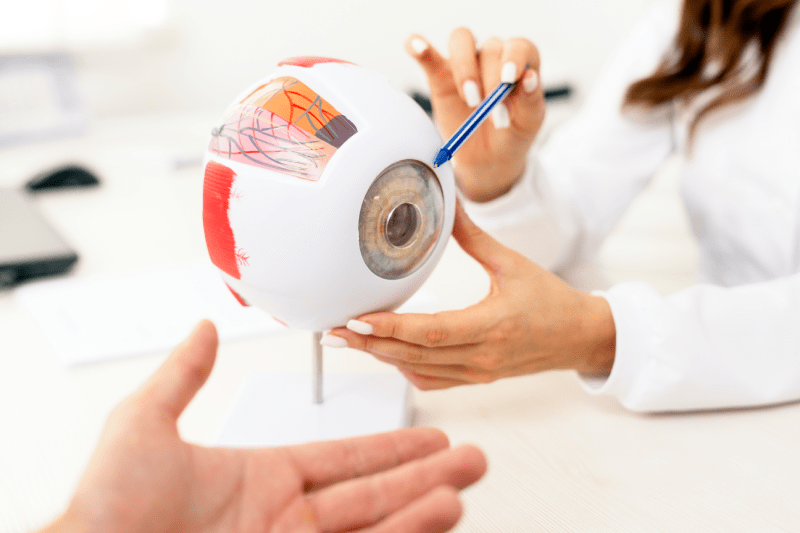
Does PCO Mean Surgical Failure?
No, the development of PCO does not mean the surgery has failed. PCO is a biological healing and reaction process of the eye, regardless of how good the surgical technique is. In modern cataract surgery, it is common practice to consider PCO not as a complication but as a secondary condition that needs to be managed after surgery.
Does The Risk Of Cataract Recurrence Change With Age?
Yes, the risk of cataract recurrence (PCO) decreases with age. In children and young patients, lens epithelial cells are much more active and multiply rapidly, leading to PCO developing earlier and at a higher rate. In older patients, this cell activity is low, so the likelihood and speed of PCO development are lower.
What Are The Symptoms Of Secondary Cataract?
The symptoms of secondary cataract are generally similar to those of the original cataract. The most common symptoms are: Slowly increasing blurry vision, especially in dim light or at night, glare (seeing halos around lights), decreased contrast sensitivity (colors appearing faded), and double vision. If these symptoms reduce your vision quality, you should make an appointment for a check-up.
Does The Laser Capsulotomy Procedure Require Hospitalization?
No, the YAG laser capsulotomy procedure does not require hospitalization. This is an outpatient procedure performed in an outpatient or office setting. The patient can leave the clinic shortly after the procedure and usually return to their daily activities immediately without any restrictions. This fast and comfortable treatment is available in all advanced eye centres in Turkey.
Can Contact Lenses Be Used After Laser Treatment?
Yes, contact lenses can be used after the YAG laser capsulotomy procedure. Since the procedure does not touch the outer surface of the eye, it does not create a restriction on the use of contact lenses. However, depending on the condition of the eye, your doctor may recommend a short break from lens use in the first few days to ensure hygiene. In the long term, after vision improves, contact lens use is entirely up to the patient’s preference.
What Are The Consequences If PCO Is Not Treated?
If PCO is not treated, it will gradually reduce vision quality and negatively affect the quality of life. As the blurriness increases, daily activities such as reading, driving, and recognizing faces become difficult. PCO does not lead to serious health risks but can increase the risk of accidents due to vision loss. When vision loss is experienced, this condition should be quickly corrected with YAG laser treatment.
Does The Intraocular Lens Get Damaged After Laser?
YAG laser capsulotomy is very precisely set and focused on not damaging the artificial lens itself. The laser targets the membrane (capsule) immediately behind the lens. Rarely, a small pit may form on the surface of the lens due to a focusing error, but this usually does not affect the patient’s visual acuity or the lens’s function. An experienced surgeon will minimize this risk.
How Is PCO Prevented Or Its Risk Reduced?
The most effective methods used to reduce the risk of PCO are the meticulous cleaning of the posterior surface of the capsule during surgery and the use of modern intraocular lenses with square-edged designs. Furthermore, the regular use of anti-inflammatory drops that control inflammation after surgery can also help reduce the risk by slowing down cell proliferation.
Can Laser Treatment Be Done More Than Once?
YAG laser capsulotomy procedure is performed only once in the same eye and a second laser procedure is not necessary, as it creates a permanent opening in the opacified posterior capsule. The window opened by the laser is permanent. If the patient’s vision decreases again, the reason for this may be another eye disease (e.g., macular degeneration or glaucoma), not secondary cataract, and requires further examination in that direction.
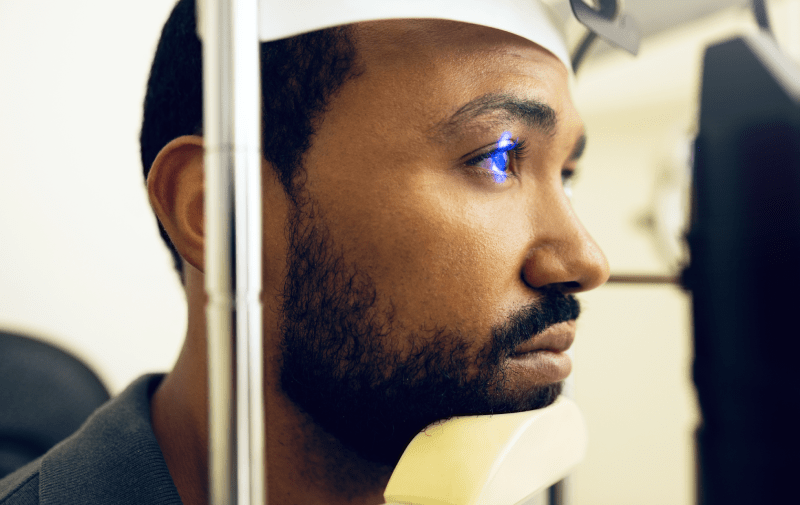
Does Diabetes Increase The Risk Of Secondary Cataract?
Diabetes (type 2) can increase the risk of secondary cataract (PCO) because it can affect intraocular inflammation and healing processes. The general vascular and nerve damage caused by diabetes can create a basis for the abnormal growth of healing tissues. Therefore, strict control of blood sugar by diabetic patients before and after surgery is vital in managing the risk of PCO.
Is A PCO-Preventing Procedure Performed With Cataract Surgery?
The main procedure to prevent PCO during cataract surgery is for the surgeon to leave the inside of the capsule bag surrounding the natural lens as clean as possible and to use specially designed (square-edged) IOLs that minimize the risk of PCO. In some cases, the central part of the capsule may be polished after the lens is placed. However, there is usually no additional surgical step that provides 100% definite protection against the risk of PCO.
Is PCO Development Related To Lifestyle?
PCO development is largely dependent on the eye’s biological response and surgical technique and is not directly related to lifestyle choices (nutrition, exercise, etc.). However, factors that slow down healing and increase inflammation, such as smoking, can indirectly accelerate PCO formation. A healthy lifestyle will support general eye health.
What Is The Preparation Process Before Laser Treatment Like?
The preparation process before YAG laser capsulotomy is very simple. A detailed eye examination is performed, and visual acuity is checked. Before the procedure, eye drops are used to dilate the pupil and numb the eye surface. The patient does not need to perform any other special preparation or fasting.
Does Laser Treatment Change The Glasses Prescription?
No, YAG laser treatment (capsulotomy) does not permanently change the glasses prescription because it does not change the artificial lens (IOL) or the cornea, which determine the refractive power of the eye. The procedure only clears the clouded membrane. However, since the blurred vision is corrected, the person starts to see clearer with their existing glasses after the laser. If the visual clarity is insufficient, a new eye examination may be necessary.
How Is PCO Detected In Post-Operative Check-ups?
PCO is detected in routine post-operative check-ups using a biomicroscope (slit lamp) with special illumination and magnification systems. The surgeon or ophthalmologist can easily see the opacification on the capsule membrane behind the artificial lens by looking into the eye. The patient’s complaints (blurry vision) support this detection.
What Happens If Laser Treatment Fails?
YAG laser capsulotomy has an extremely high success rate and generally does not fail. Rarely, if the laser does not create a large enough opening, the procedure can be repeated a few days later. However, if the laser itself cannot clear the opacification, this situation may indicate the presence of another eye problem (such as macular edema or glaucoma) and requires advanced examination in that direction.
Is The Development Of Secondary Cataract Dependent On The Region The Person Lives In?
The development of secondary cataract is not dependent on the geographical or climatic conditions of the region the person lives in. It is completely related to the internal biology of the eye and surgical factors. However, although environmental factors such as excessive exposure to sunlight can affect general eye health in the long term, there is no direct evidence on PCO formation.
Is Emergency Treatment Required If PCO Occurs?
If PCO occurs, it is generally not an emergency. Treatment is decided based on how much the clouding reduces the person’s daily quality of life. If visual acuity becomes insufficient for safe driving or reading, treatment is planned. However, if there are symptoms such as pain or flashes of light along with vision loss, an emergency examination should be sought.
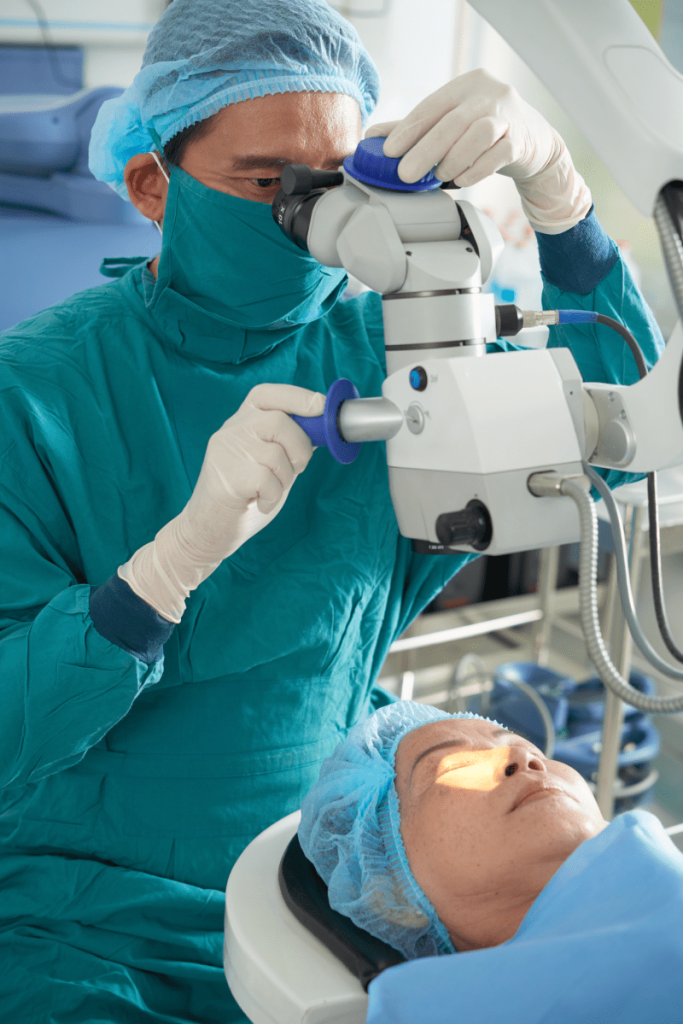
Do Multifocal Lenses Increase The Risk Of Secondary Cataract?
Multifocal (multifocal) lenses do not increase the risk of PCO compared to traditional monofocal lenses. However, since multifocal lenses are very sensitive in terms of vision quality, even the slightest clouding caused by PCO can affect the patient’s quality of life more significantly. Therefore, PCO development is monitored more carefully in patients using multifocal lenses.
Is The Change In Intraocular Pressure After Laser Treatment Permanent?
There may be a temporary increase in intraocular pressure (IOP) after YAG laser treatment, but this condition is usually not permanent. Short-term drops are prescribed to reduce the IOP after the procedure. This condition usually returns to normal within a day. Permanently high IOP can be a rare side effect of the laser and may require additional glaucoma treatment.
Does Glasses Use Affect PCO Development?
Using glasses or contact lenses does not affect PCO development. Since PCO is a cellular reaction that occurs in the internal part of the eye, external visual aids do not have an effect on this biological process. The moment PCO affects your vision clarity, whether you use glasses or not, laser treatment will be necessary.
Is The Risk Of Secondary Cataract A Recurring Problem?
PCO is not a recurring problem after being successfully treated with the YAG laser. The opening created by the laser is permanent. This permanent solution to PCO provides a great assurance for patients who experience vision loss after cataract surgery.
When Does The Decrease In Vision Quality Start Again?
The decrease in vision quality after cataract surgery, if caused by PCO, begins slowly and gradually over weeks or years. PCO does not cause sudden, total vision loss. If vision suddenly drops after laser treatment, the reason for this may be a new problem occurring in the back of the eye (retina or macula), and a specialist should be consulted immediately.
For Secondary Clouding, Proceed With Cure Holiday
Clouding (secondary cataract) that develops after cataract surgery is no longer a condition to be feared in modern medicine. You can quickly regain your clear vision with just a few minutes of YAG laser treatment.
Cure Holiday will guide you in finding clinics in Turkey that specialize in the management and treatment of such secondary conditions and have the latest laser systems. Contact Cure Holiday immediately to regain your vision as soon as possible and ensure your treatment process is comfortable.
